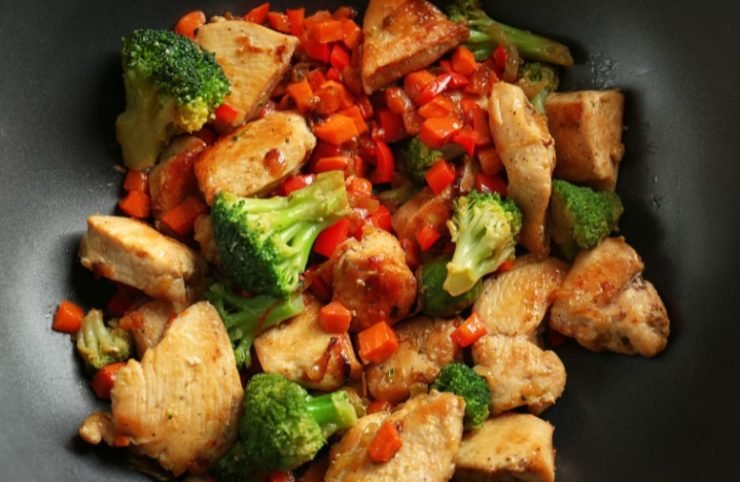When most people order take-out, I doubt they think twice about the thickness of the stir fry sauce. But, making sure it’s not thin and soupy or thick and unappetizing can make or break an entire meal.
I’ve been cooking professionally for over a decade, and several of those years were spent manning the wok station. Today, I’ll be sharing just how easy it is to make restaurant-quality stir fry with a perfect sauce consistency. Plus, a little trick the pros use that could make your next stir fry night run a little smoother.
In This Article
Method 1: The Cornstarch Slurry
This is the tried and true, almost foolproof method to thicken stir fry sauce. It also happens to be what most Chinese take-out restaurants use here in the states.
1. Mise En Place
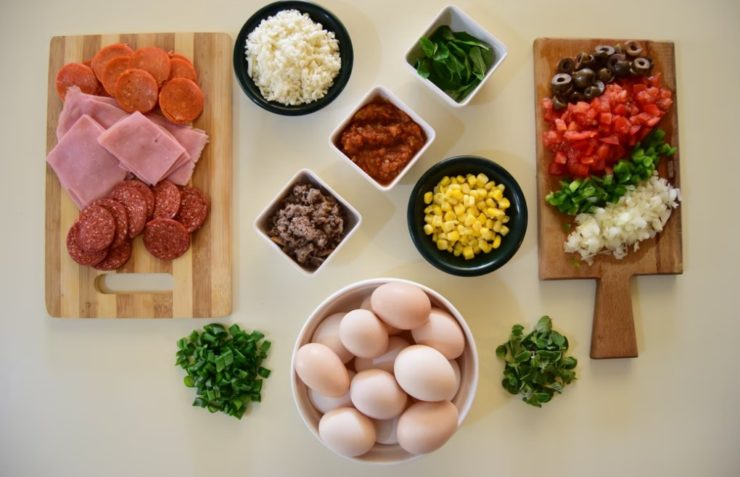
Mise en place simply means to have everything prepped, ready, and organized for the cooking task at hand. It’s an essential part of any professional kitchen, and I believe mise en place can also transform how you cook at home.
When it comes to making and thickening a stir fry, this first step is where all the heavy lifting happens. You’ll want all of your aromatics, vegetables, and meat cut and ready to hit the pan. During this time, you should also combine the ingredients for your stir fry sauce and mix up your slurry.
A cornstarch slurry is the easiest and most common way to thicken a stir fry sauce. To make the slurry, simply combine cornstarch with water in roughly equal amounts and mix well. You’re looking for the consistency of heavy cream.

Pro Tip: Your fingers are the best tool for mixing a cornstarch slurry. Use your fingers to pinch and press the cornstarch to make it a smooth and lump-free mixture.
Stir-frying is a hot and fast way of cooking, so having everything ready to go (mise en place) is crucial.
2. Get Cooking
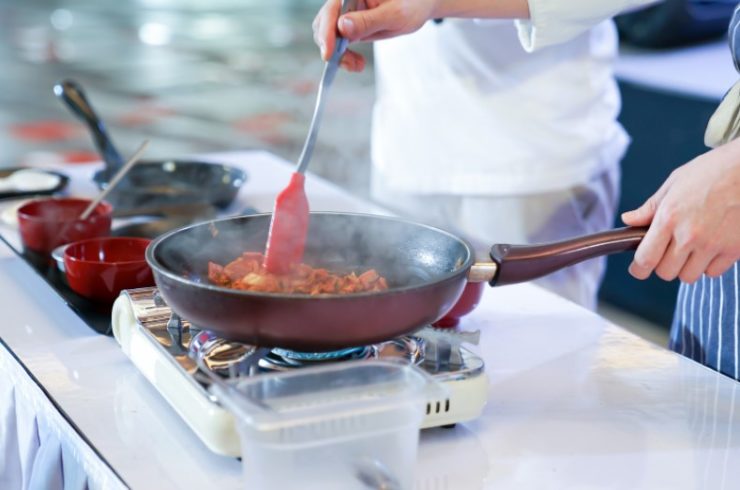
Now that the hard part is done, it’s time to crank the heat on your wok and get this party started. And while a carbon steel wok is the ideal pan for the job, a saute pan will work just fine as well.
This step will change slightly depending on what you’re cooking. But, the goal here is to add ingredients in order of what takes the longest to cook. That way every ingredient will finish cooking at the same time and you won’t be left with overcooked vegetables and undercooked meat.
3. Sauce
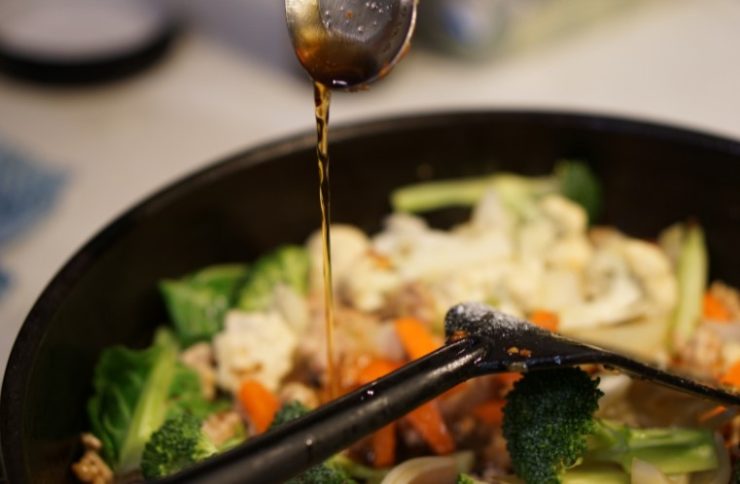
When everything is just about done cooking, add your stir fry sauce and bring it to a simmer. This should happen quickly since your pan will be quite hot throughout the entire cooking process.
4. Slurry
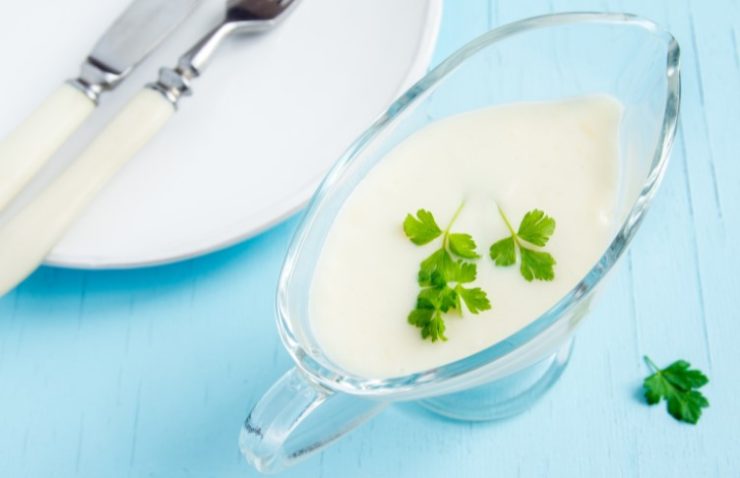
And now for the moment that we’ve all been waiting for.
But first, there’s a good chance your cornstarch slurry has separated between step 1 and now. So, take a second to give it another good mix.
Slowly pour in the slurry while stirring your sauce. Cornstarch will activate and thicken as soon as it reaches a simmer, so once your sauce begins bubbling again, it will be about as thick as it’s going to get.
So, start with a small amount (about a tablespoon per serving) and add more slurry as needed until your sauce is as thick as you’d like.
Give everything a final toss to coat and you’re ready to eat.

The Restaurant Shine Treatment: A slurry can turn sauces cloudy and dull. Finish your stir fry with a drizzle of toasted sesame oil before your final toss to add flavor and an attractive shine.
Method 2: The Next Level Slurry
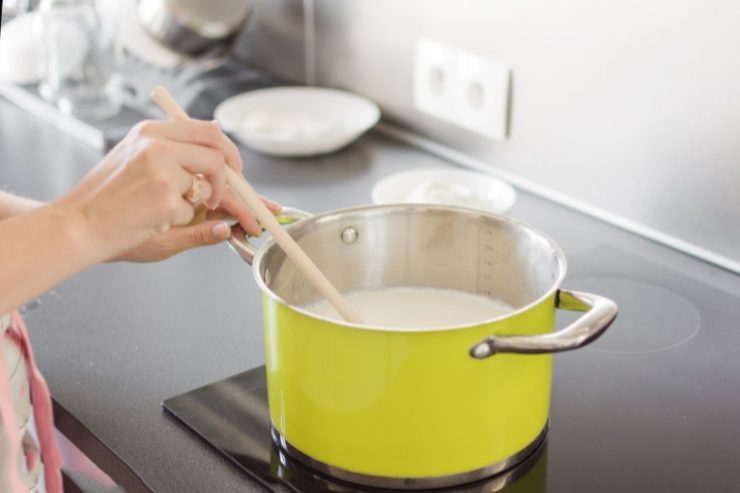
A cornstarch slurry might be the best way to thicken a stir fry sauce. But, since cornstarch and water quickly separate, it must be remixed every time you want to use it. Unfortunately, that means making a large batch and using it throughout the week won’t actually save you any time.
Not a big deal if you only use a cornstarch slurry once a week or less. But, if you’ll be using it several times a week or even several times a day (I’m looking at you restaurant people), you’re going to love this trick.
First, make a slurry with cornstarch and water like you normally would. You can make as much or as little as you’d like. Remember, you’re looking for about the same consistency as heavy cream.
Next, place about a quarter of the slurry in a pot over medium heat and stir continuously. As soon as it starts to thicken, pour and whisk it back into the uncooked portion of the slurry.
And that’s it! Your next-level slurry can be cooled and stored in the fridge. It won’t separate, so it will be ready to go whenever you need it.
In the Cantonese restaurant where I learned this, we would keep a squeeze bottle of this slurry next to the wok station. That allowed us to thicken stir-fries and other dishes all day and night, no mixing required.
Not only can this save you time, but it will help ensure your stir fry doesn’t get overcooked while you mix or remix a standard slurry in the heat of cooking.
Method 3: The Built-In Slurry
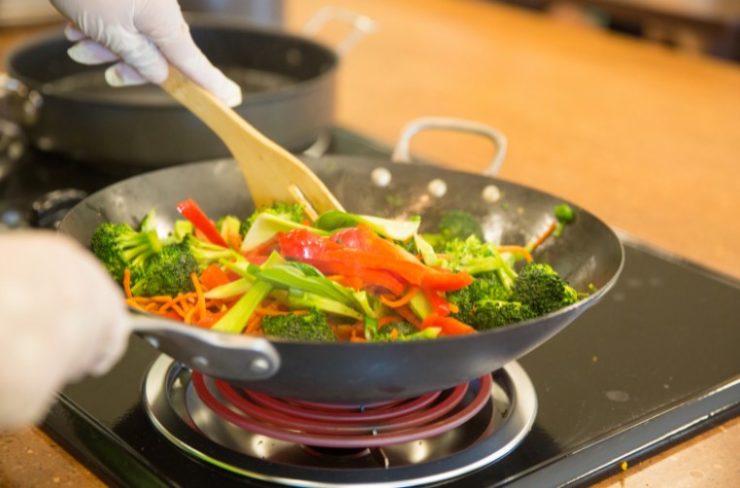
You may come across recipes for stir fry sauce that includes cornstarch as one of the ingredients. By adding the thickening starch into your stir fry sauce before it ever hits the pan, you skip a step and save some time, but it has one major drawback.
When your thickener is built into your sauce, you’re stuck with a specific thickness. As soon as the sauce hits the pan and comes to a simmer it will thicken, and that’s that. It doesn’t leave you much room to adjust if your sauce ends up being too thick or too thin.
So, if you find a recipe like this that works for you every time, that’s a great option. But for ease of use and versatility, I think a traditional slurry is your best bet in most cases.
Thickening Stir Fry Sauce Without Cornstarch
Cornstarch is inexpensive, easy to find, and easy to use. But, if you don’t have any or just don’t want to use it, there are plenty of alternatives that will work well in its place. I’ve even written a guide that will walk you through some of the best starch substitutes and how to use them.
If you’re going for a classic take-out style stir fry, a cornstarch slurry is going to give you a consistency as close to the real thing as possible. In fact, it’s what most Chinese restaurants in the US use themselves.
The simple, two-ingredient thickener is almost foolproof as long as you keep your slurry well mixed and lump-free. And once you nail your stir fry sauce, you’re going to want restaurant-worthy rice to go along with it. So check out the 3 best Japanese rice cookers to take your cooking to the next level.
Frequently Asked Questions
Can I Use Flour To Thicken Stir Fry Sauce?
Flour can be used to thicken stir fry sauce but it is not the best option. Flour should be cooked for several minutes or longer before eating, and that can lead to an overcooked stir fry.
How Do You Fix A Stir Fry Sauce That’s Too Thick?
If your stir fry sauce gets too thick from too much slurry or from over-reducing, you can simply stir in water in small amounts to thin out the sauce.
Can I Freeze Stir Fry Sauce?
Stir fry sauce can be frozen but you should do so before it is thickened. While some thickening agents will freeze and thaw just fine, others can turn into an unpleasant or lumpy sauce when thawed.
